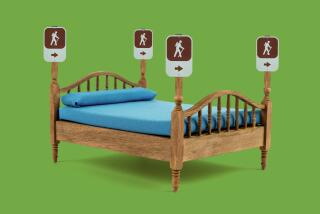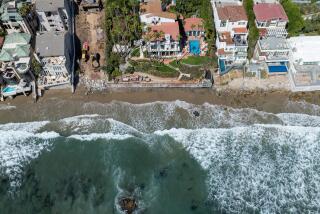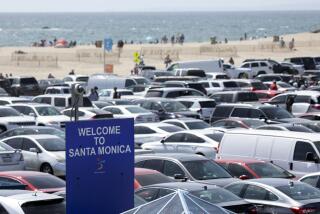Seal Beach Fears Meters Mean Charm Is Expiring
- Share via
Seal Beach thinks of itself as the small coastal town that never grew up, and residents have long been proud that their city has no parking meters.
For decades, residents and merchants fought attempts to install them along Main Street, making Seal Beach the only beach city in Orange County and one of only three in Southern California without meters.
But the days of free parking are coming to an end.
Faced with a budget crunch, a divided City Council this month voted to install meters on the city’s main drag.
The decision has sparked a familiar debate: Is Seal Beach losing its much-protected charm?
“Seal Beach is special,” said Councilman Paul Yost, who voted against the parking meter proposal. “People feel like it’s the last little beach town, and they want to keep it that way. And every time something comes across that people feel is a threat to that, they get very emotional.”
The city plans to install 301 meters. Most will be in the Main Street shopping district, a four-block stretch between Pacific Coast Highway and the Seal Beach Pier that’s lined with restaurants, gift shops, bars and coffeehouses. Officials expect the meters to generate $500,000 a year, which they say is needed for increased costs of police and fire department pensions.
Parking meters have a long history in Seal Beach.
One of the first battles was in the late 1960s, when the city installed some meters along Main Street to pay for a parking lot near the beach.
Stan Anderson, then the mayor, pushed the measure through only after the city promised to remove the meters after five years. Friends said Anderson always regretted removing the meters when the time came, depriving the cash-strapped town of 26,000 of a constant source of revenue.
“He told me it was the biggest mistake he ever made,” said Ron Bennett, who chaired a task force on Main Street parking in the 1970s.
At the heart of the parking problem is the fact that there are not enough spaces, especially on weekends. Some merchants fear meters will drive away customers, who would go to nearby shopping centers with free parking. Residents worry that the meters don’t fit the small-town character they’ve tried hard to maintain.
This is the city, after all, that wouldn’t allow Starbucks to move to Main Street because residents believed the coffeehouse would sully the town’s charms.
A walk down Main Street is in some ways a walk into the past and away from the modern world of malls. The street has a mom-and-pop grocery, a small hardware store and a one-screen movie house, the Bay Theater.
Some landmarks are enduring, including Walt’s Wharf restaurant and Clancy’s bar. Some residents waited for years to find the right house for sale in town, and once they arrive, they rarely move away.
While most beach cities seem to blend into one another, Seal Beach is set apart by the San Gabriel River and Alamitos Bay to the north and the sprawling Seal Beach Naval Weapons Station to the south.
Preserving this hometown atmosphere has for decades been the central issue in Seal Beach, from fights over chain stores on Main Street to the perennial debate over free parking.
“Main Street is a charming place because it’s a place where the people of Seal Beach congregate,” Yost said. “It’s the center of town, their home, and I’m concerned that meters will change that.”
Other attempts over the past three decades to place meters on Main Street failed. But this time, the city’s finances left officials with no choice. Even council members who voted for the parking meters did so reluctantly.
The vote leaves three Southland beach towns without street meters--Malibu, Palos Verdes Estates and Rancho Palos Verdes.
Along Main Street, merchants and residents had different perspectives about the milestone.
Woody Woodruff, who owns Woody’s beauty salon, said he hopes the meters will prevent beachgoers from parking all day along the street. He doesn’t think it will hurt Main Street’s image.
“When I came here [in 1981], I thought it was a quaint town, but not because it didn’t have meters,” he said.
Several stores away, however, Tammi Madelin, owner of a gift shop, said the city may do more harm than good if it installs meters.
“I think there is a good chance it will hurt my business, and right now we don’t need anything else hindering the success of our business,” she said.
Some residents believe the city has taken the easy way out.
“They were elected to do their duty ... that’s to balance the budget. And instead they’re putting it on the backs of the people who live here,” said Joyce Parque, a resident since 1969.
Yost still holds out hope his colleagues will reverse course. He noted that the meter plan was approved on a 3-2 vote.
“We only need one person to change their mind,” he said. “Until the sidewalk is chopped up and holes are drilled, it’s not final. And even then we can still take them out.”
More to Read
Sign up for Essential California
The most important California stories and recommendations in your inbox every morning.
You may occasionally receive promotional content from the Los Angeles Times.










